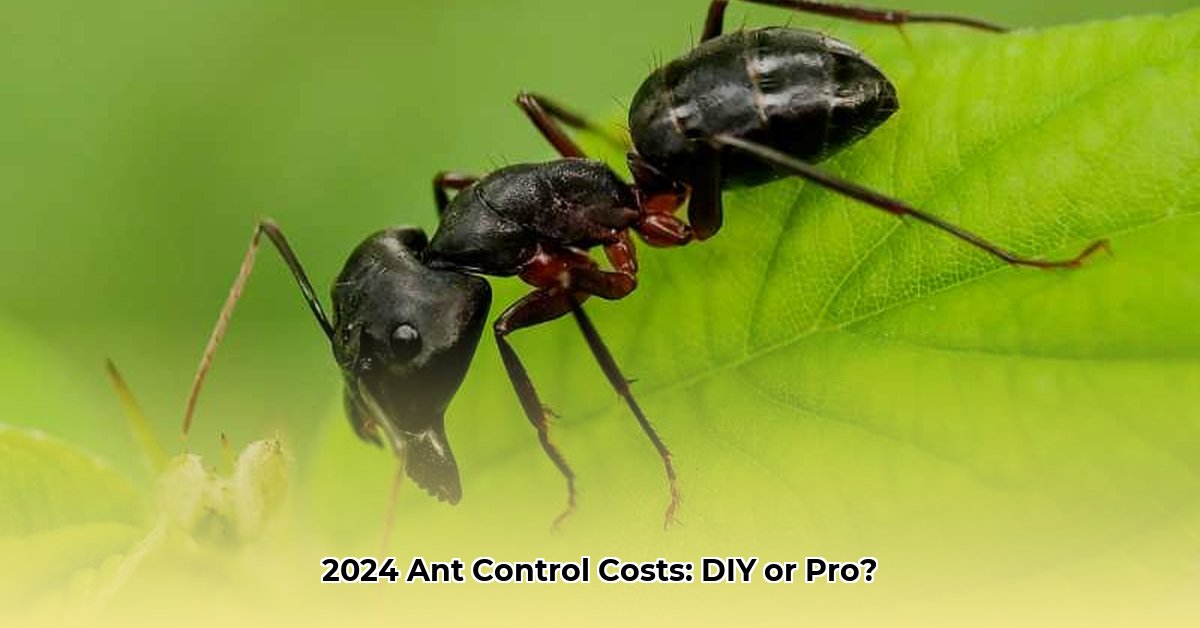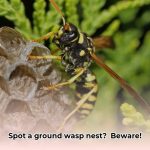Decoding Ant Extermination Costs
Ants in your pantry can be a real nuisance. This guide breaks down ant control costs, whether you’re tackling the problem yourself or hiring a pro. We’ll explore everything from identifying ant types to preventing future infestations.
Factors Affecting Your Wallet
Several factors influence ant extermination costs. Understanding these helps you budget effectively.
Ant Type: Not All Ants Are Created Equal
The ant species impacting your home significantly affects cost. Common pavement ants are relatively easy to manage, like treating a common cold. However, carpenter ants, notorious for structural damage, require more specialized treatment, akin to setting a broken bone. Fire ants, with their painful stings, also necessitate specific approaches, increasing costs. Identifying the ant type is the first step towards effective and cost-efficient treatment.
Home Size: Scale Matters
A larger home generally means a larger treatment area, potentially increasing costs. Think of it like painting: a small room requires less paint than a whole house. However, a small home with a severe, concentrated infestation could cost more to treat than a larger home with a minor, localized problem. The extent of the infestation is as important as the square footage.
Infestation Severity: From Minor Annoyance to Major Headache
A few stray ants versus a full-blown colony marching through your kitchen require different treatment intensities. A small spot fire is easier to extinguish than a raging inferno; similarly, a minor ant problem is simpler and less costly to address than a widespread infestation.
Treatment Method: The Right Tool for the Job
The chosen extermination method influences the overall cost. Simple bait traps are budget-friendly, while comprehensive barrier applications or specialized treatments for certain ant species are more expensive. Some ants respond better to specific treatments, influencing the exterminator’s recommendation and the final price.
2024 Ant Extermination Price Guide
While providing an exact figure without a specific assessment is impossible, this table offers a general idea of potential professional ant control costs in 2024:
| Ant Type | Small Home (<1500 sq ft) | Medium Home (1500-2500 sq ft) | Large Home (>2500 sq ft) |
|---|---|---|---|
| Common Ants | $75 – $150 | $125 – $225 | $200 – $350 |
| Carpenter Ants | $200 – $400 | $300 – $500 | $400 – $700+ |
| Fire Ants | $150 – $300 | $250 – $450 | $350 – $600+ |
| Odorous House Ants | $80 – $160 | $130 – $230 | $180 – $320 |
Getting quotes from several local exterminators is recommended. This allows you to compare prices and services, ensuring you find the best fit for your needs.
DIY Ant Control: A Step-by-Step Guide
For minor ant issues, a DIY approach can be effective. This is especially true if you identify the ants correctly and catch the infestation early.
Step 1: Identify the Intruder
Knowing the ant species is crucial for effective treatment. Are they tiny sugar ants, larger carpenter ants, or something else? Online resources, like those from the University of California Agriculture & Natural Resources, can help with identification.
Step 2: Eliminate Food Sources
Ants follow scent trails to food. Clean up crumbs, spills, and store food in airtight containers. This disrupts their supply lines and makes your home less attractive.
Step 3: Natural Remedies
Natural solutions like vinegar, lemon juice, or peppermint oil can disrupt ant trails. These create scent barriers that ants may avoid. While often effective for minor infestations, their impact on larger problems is limited.
Step 4: Bait Stations
Over-the-counter bait stations lure ants with poisonous bait, which they carry back to the colony. Place bait stations near ant trails for optimal results.
Step 5: Barrier Sprays
Insecticidal sprays create chemical barriers around your home. Choose pet-safe options if necessary and follow product instructions meticulously.
Hiring a Pro: When to Call for Reinforcements
DIY methods may not suffice for larger, recurring infestations, or those involving destructive species like carpenter ants. Professional exterminators have the expertise, tools, and stronger treatments necessary for effective, long-term control. They can also identify the infestation’s source and recommend preventative measures.
Preventing Future Infestations: A Proactive Approach
Once the current problem is resolved, preventative measures are key. Regular cleaning, proper food storage, sealing entry points (cracks, crevices), and moisture control make your home less hospitable to ants. Trimming vegetation touching your house further reduces access.
Conclusion: Taking Control of Your Ant Situation
Understanding the factors influencing ant extermination costs empowers you to make informed decisions. Whether you choose DIY methods or professional services, addressing the problem promptly prevents it from escalating. Regular inspections and preventative measures can save you time, money, and future headaches.
- Grass Forever in Livermore: Your Guide to Artificial Turf - April 22, 2025
- German Roaches vs. American Roaches: Key Differences and Control - April 22, 2025
- 150+ Flowers That Start With S: A Comprehensive Guide - April 22, 2025










